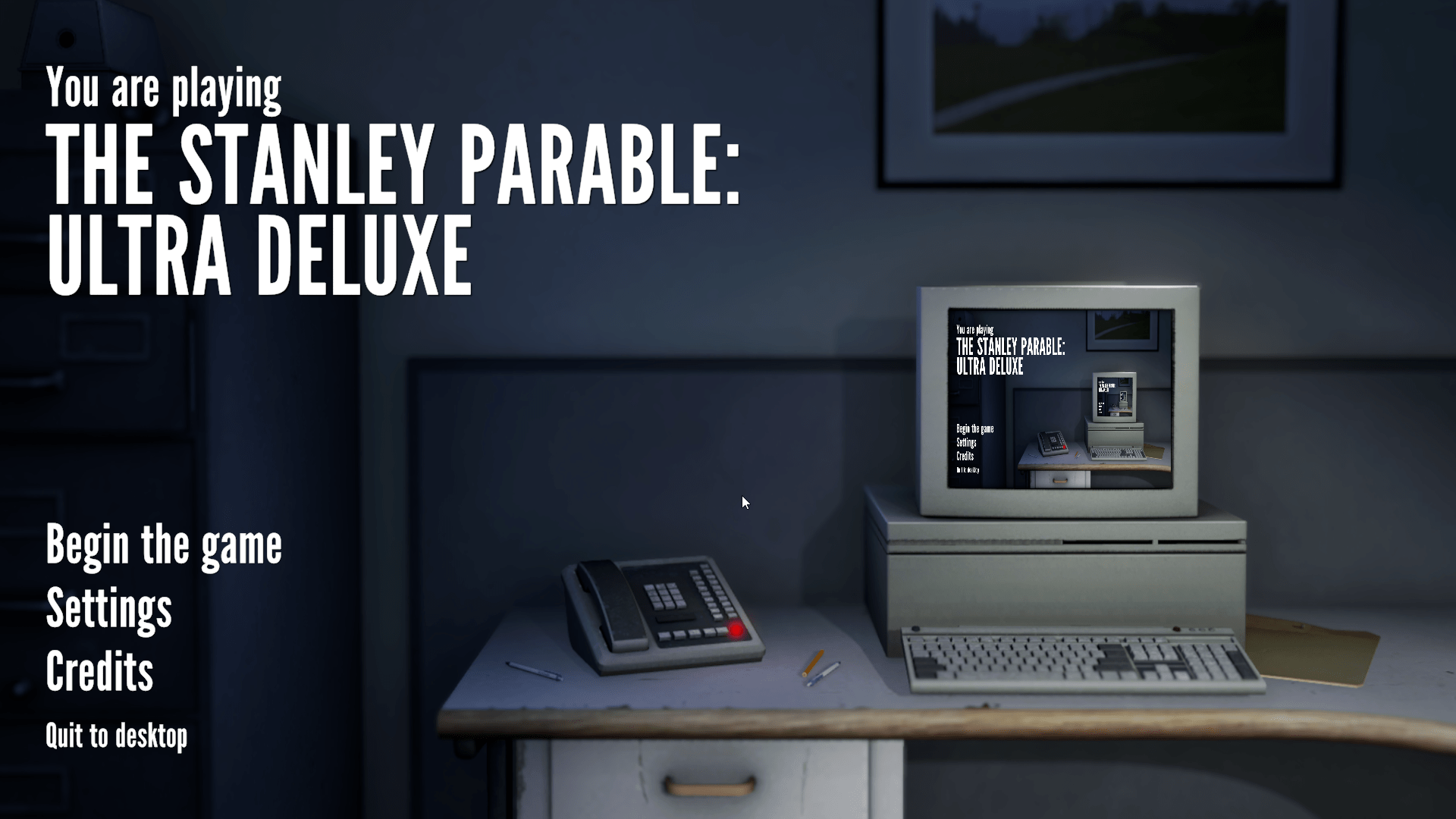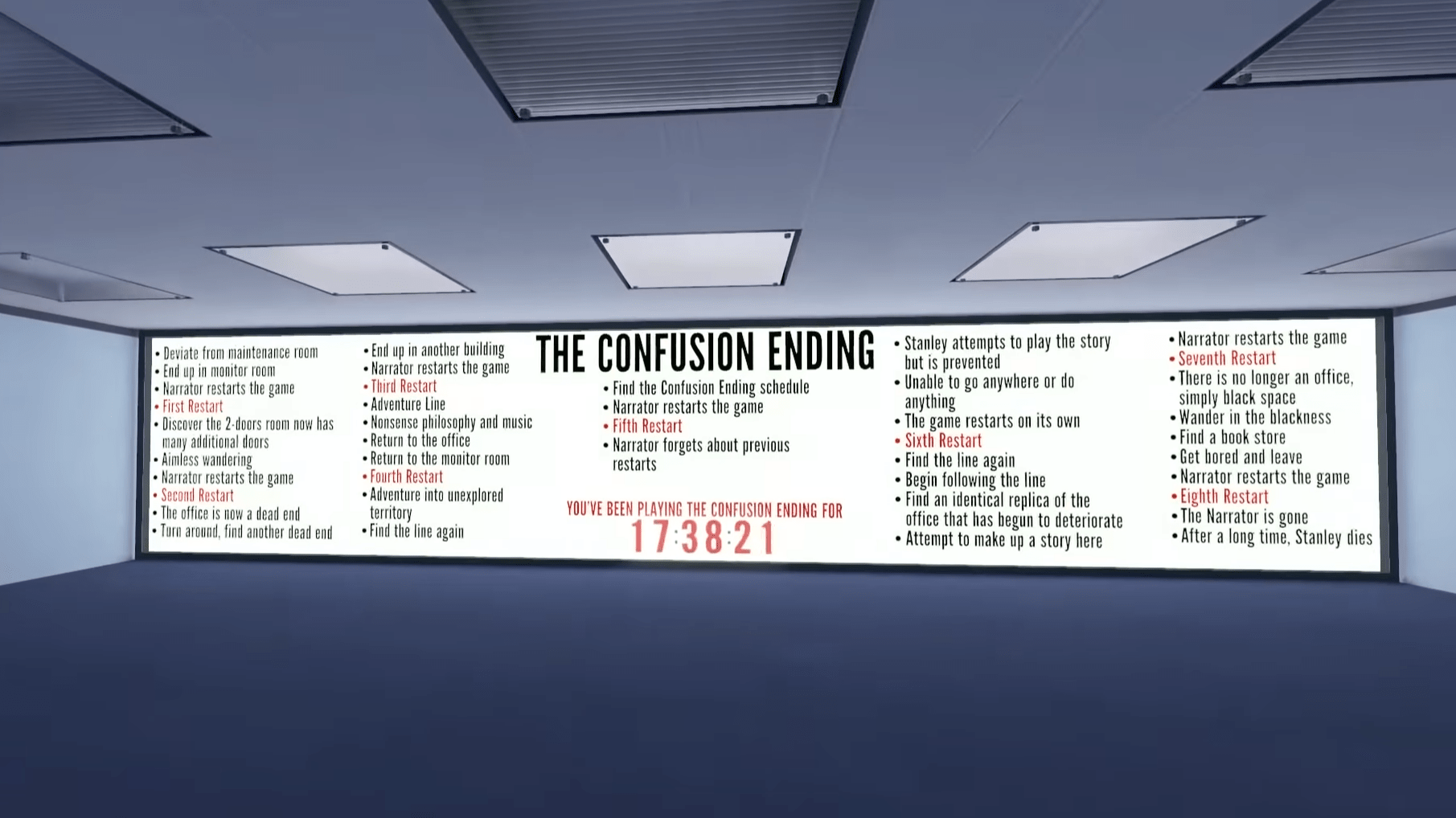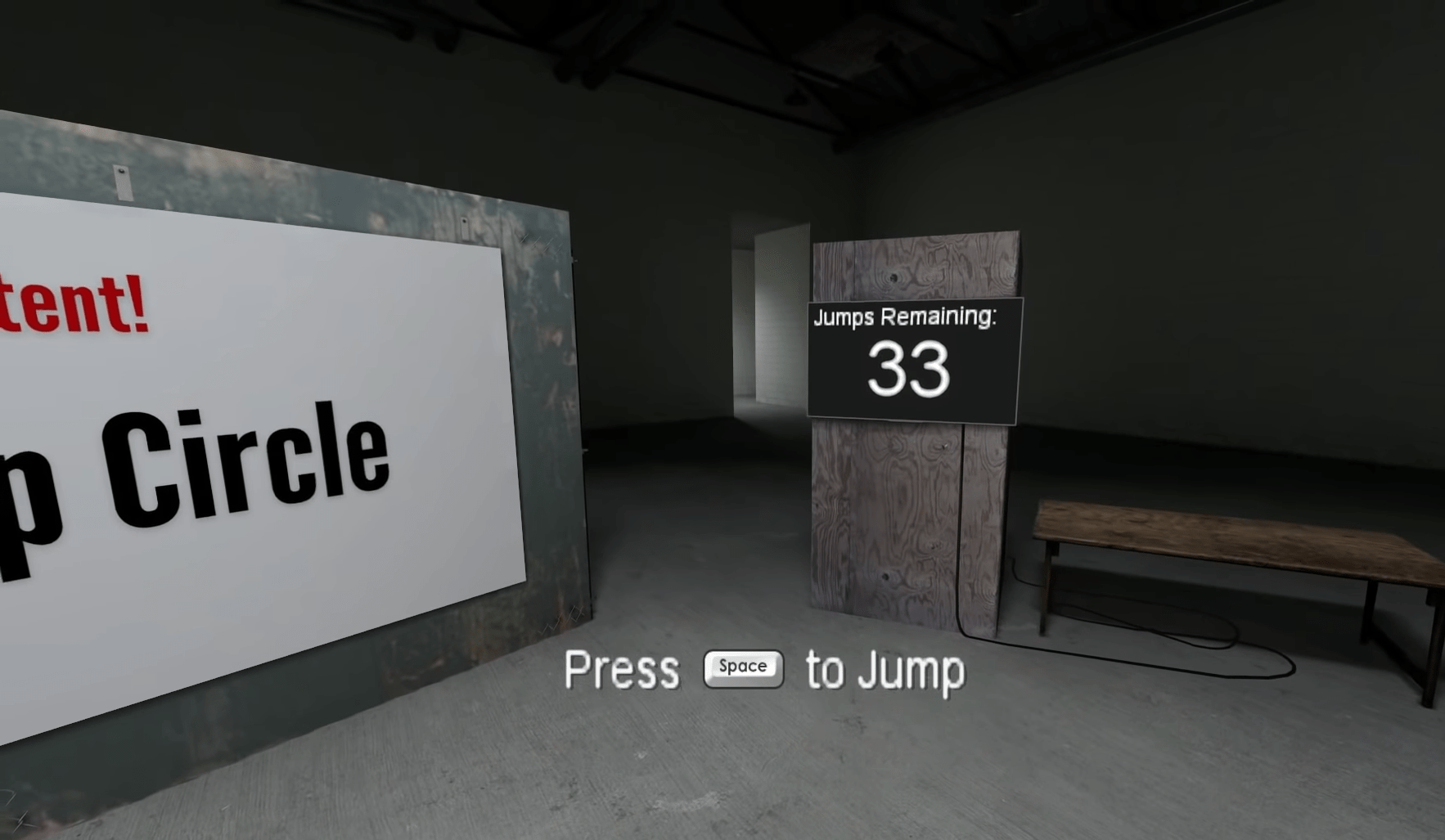Intro
For this week’s critical play, I decided to play The Stanley Parable: Ultra Deluxe, the sequel to the famed game The Stanley Parable, both of which were designed and written by Davey Wreden and William Pugh. While I played this game on Steam, it exists on a variety of other digital platforms like the Nintendo Switch, PS5, and Xbox.

The game starts with the narrator explaining the premise of the game—you are Stanley, an employee working at a big company, who one day stops receiving instructions for your job and finds that everyone from your office has disappeared. You are then free to walk around and explore while the narrator continues to narrate the actions you should be taking, (e.g. “when Stanley came to a set of two open doors, he entered the door on his left”), but whether you follow his directions or not is up to you. Every choice you make has the possibility of leading you to a different ending, with the game having about 40 different endings. The game also “resets” after each ending is reached, allowing you to explore and discover more endings. Because of this, it is a player vs. game type of game.
Target Audience
The target audience of this game is mainly people who enjoy heavily narrative based games that don’t require a lot of skill to be able to play. The game is also very philosophical in nature, involving themes of existentialism and free will, which I would say makes the target demographic older than usual (maybe 14+).
Mechanics
Like other walking simulators, the main controls the player can use are the mouse to look around and the WASD keys to move forward, left, backward, and right. The only other controls the player has that affect gameplay are crouching and occasionally being able to interact with objects (like buttons or keypads). Because of this most of the fun comes from the narrative of the game, which is created by both the actual narrator in the game and the consequences of the player’s own choices. The heavily emphasized dynamic of player choice encourages players to either follow or disobey the narrator’s instructions at different points in the game, which all lead to very different game endings. Combined with the game mechanic that resets the game after every ending is reached, the goal of the game quickly becomes trying to discover as many endings as possible, which lends to both a discovery and challenge type of fun.

Uniqueness
Unlike other walking simulators, or just other games in general, I like that this game often breaks the 4th wall and actually references the fact that it is a walking simulator. For example, the game often makes fun of the fact that the player can’t jump in the game, with there being a whole bit in the ultra deluxe version about a jump circle that enables a jump mechanic while standing in it, but the player can only jump in it 36 times throughout the entire duration of the game. There’s also an ending that involves the player getting stuck in a very shallow hole that they can’t get out of because there’s no jump button and only being able to get out with a specially given “return to surface” button (if anyone readings this ever plays this game and gets to this part, I highly recommend not using the button for a few minutes; it leads to my favorite ending in the game).


As mentioned before, the multiple endings are also very unique for a walking simulator as most other walking simulators follow one linear storyline. This difference makes the game way more fun in my opinion.
Improvements
I don’t think there’s much I would improve about the game itself, but I think it would be nice to have an in-game tracker of all the endings you’ve reached. Since the fun in this game is all about discovering different endings, I think it would be nice to see your progress so you would have an idea of what you’ve already explored/should focus on exploring next.


